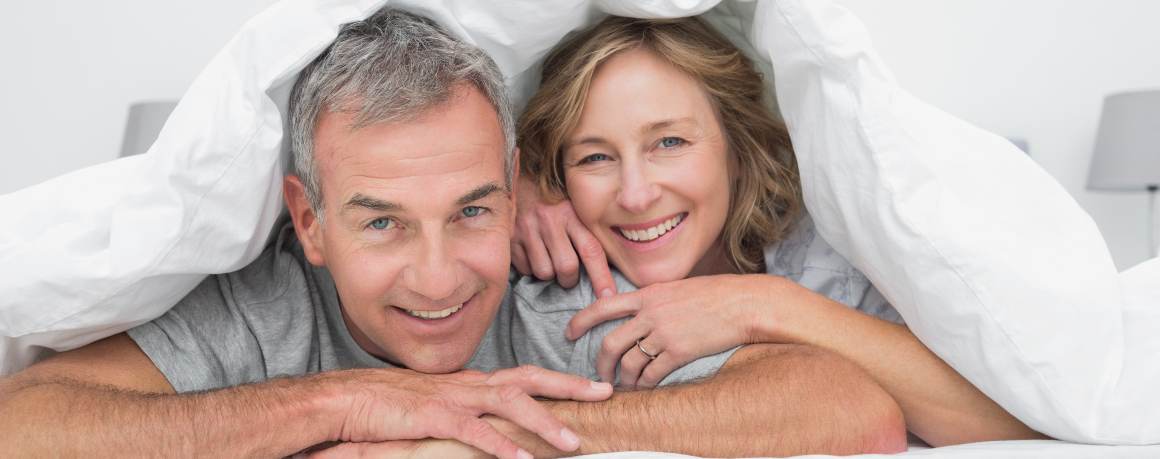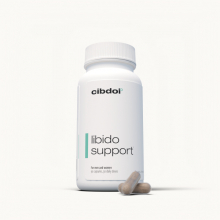What Time of Day is Libido Highest for Men and Women?
Published:
Libido, or sex drive, varies throughout the day and is influenced by a variety of biological, psychological, and social factors. Discovering when libido is at its peak can provide insight into optimizing intimacy and sexual satisfaction. Here's a look at what time of day libido tends to be highest for men and women.
Contents:
- Morning Glory: Why Early Morning Libido is Common
- Midday Dip: Why Libido Often Decreases in the Afternoon
- Primetime Passion: Why Evenings Spike Libido for Many
- Gender Differences: Distinct Libido Patterns
- Other Influences on Libido Patterns
- Tapping into Optimal Timing
- The Takeaway: Libido Shifts Throughout the Day
- Frequently Asked Questions About Daily Libido Patterns
- Why do I sometimes wake up aroused?
- Is it normal for my partner not to want sex in the morning?
- Why does my arousal fade in the afternoon?
- I’m too tired for sex at night, what should I do?
- How can lack of sleep affect libido?
- Does menopause alter women's libido patterns?
- Why does my partner rarely initiate sex?
- How do medications impact daily libido?

Morning Glory: Why Early Morning Libido is Common
For many, desire tends to perk up first thing in the morning. In fact, an estimated 50% of men wake up with an erection. Why is early morning libido so common? Here are some reasons why libido may be pumped up upon waking:
- Hormone cycles - Testosterone levels peak in the early morning around 8am in men. This hormone boost can translate into heightened sexual interest. In women, estrogen and testosterone also peak in the morning.
- Well-rested - After a night's sleep, energy levels are replenished which can enhance libido. Fatigue and stress tend to dampen desire.
- Circadian rhythm - The intrinsic daily cycles regulating sleep, hormone levels, and more that follow a 24-hour loop are tied to arousal.
- Bladder - A full bladder commonly leads to morning erections in men as it presses on nerves and blood vessels that trigger arousal.
So in summation, restored energy levels, peaking testosterone, and certain biological processes upon waking culminate into heightened desire in the early morning for many.
Midday Dip: Why Libido Often Decreases in the Afternoon
In contrast to peaks in the morning, research indicates libido tends to take a dip in the afternoon around 2-4pm. Why does desire decline at this time? Several factors are at play:
- Post-lunch energy slump - The digestive process diverts blood away from genitals which can lower arousal. Food coma anyone?
- Stress accumulation - Work and life demands pile up throughout the day leading to mental distraction and preoccupation.
- Diurnal cortisol rhythms - Cortisol levels naturally decline later in the day which can interfere with arousal.
- Mental fatigue - Decision making and focus drain mental energy by the afternoon that could otherwise fuel libido.
So the sluggishness many feel in the afternoon translates into lagging libido as well. The exciting productivity of the morning gives way to fatigue and diversion of energy.
Primetime Passion: Why Evenings Spike Libido for Many
Though libido may wane for a bit in the afternoon, evening often brings a resurgence of sexual desire. Why is the primetime, pre-bed window optimal for arousal? Consider the following drivers:
- Dimming lights - Darkness triggers testosterone production, for both sexes, that boosts libido.
- Decompression - Unwinding from the workday and relaxing releases tension that interferes with arousal.
- Alignment of routines - As the workday wraps up, couples are more likely to be in close proximity and able to connect.
- Intimacy hormones - Oxytocin levels increase before bed, promoting bonding and sexual connection.
- Better sleep - Orgasm releases prolactin and other hormones that enhance sleep quality.
So the zeitgebers of darkening skies, daily routines aligning, and pre-bed biology converge to make the evening a prime “playtime.”
Gender Differences: Distinct Libido Patterns
While the rises and dips of libido follow similar daily rhythms between the sexes, there are some distinct differences:
Men
- Morning peak - Testosterone and arousal surge in the morning, leading to a pronounced early morning climax of desire for most men.
- Swift spikes - Men often can move quickly from low to high sexual desire given sufficient stimuli.
- Visual triggers - Visual input like erotic images can swiftly spike libido in men.
- Higher frequency - On average, men report feeling desire more frequently than women.
Women
- Nighttime peak - Women's libido tends to build more gradually during the day, leading to an apex in the evening.
- Slower arousal - Psychological and emotional engagement tends to enhance women's desire more slowly.
- Total body - Whole body sensuality and touch often spark female arousal more than visual input alone.
- Cyclical nature - Shifts during the menstrual cycle influence the rise and fall of libido.
So while men are often faster to arousal and have a higher baseline libido, women's desire tends to be more variable and peak at different times.
Other Influences on Libido Patterns
Beyond circadian factors, other key variables shape daily libido:
- Age - Sex drive declines with age for both genders, but men often see a more drastic drop off.
- Physical health - Medical conditions, medications, diet, and lifestyle habits impact arousal.
- Mental health - Stress, depression, trauma, and anxiety interfere with libido.
- Relationship factors - Emotional intimacy, trust, communication, and satisfaction modulate desire.
- Sexual history - Past experiences, beliefs about sex, and self-image affect libido.
So libido exists within a complex interplay of bio-psychosocial factors. While natural daily peaks and valleys occur, individual variance plays a major role as well.
Tapping into Optimal Timing
Want to harness your body's natural libido rhythms for better sex? Consider the following tips:
- Wake up intimacy - Take advantage of morning arousal through cuddling, oral play, or quickies.
- Schedule sex dates - Plan evening interludes when energy is restored.
- Reduce stress - Counteract mental distraction by practicing mindfulness and relaxing together in the evenings.
- Set the mood - Dim the lights, play music, use scents, and limit devices at night to ignite the senses.
- Communicate - Share your optimal times of day and cues that tap into arousal.
Synchronizing with body clocks while also understanding unique needs can help strike a passionate balance.
The Takeaway: Libido Shifts Throughout the Day
Libido is not static but rather a dynamic that moves through peaks and valleys in sync with biological rhythms. Desire tends to surge in the mornings and evenings due to hormone shifts, energy levels, and daily cycles. But lifestyle, relationships, health, and individual differences all shape arousal patterns as well. Tapping into natural rhythms while honoring unique needs can optimize enjoyment and intimate connection.
Frequently Asked Questions About Daily Libido Patterns
Still have questions about the ebbs and flows of sexual desire over the course of the day? Here are answers to some commonly asked questions.
Why do I sometimes wake up aroused?
Morning erections and arousal are triggered by climbing testosterone levels, circadian rhythms and a full bladder pressing on nerves and vessels. This normal “morning glory” affects about 80% of men and is a sign of healthy function.
Is it normal for my partner not to want sex in the morning?
Absolutely. While men’s testosterone peaks in the early hours, women’s libido patterns are more variable. Respect your partner’s preferred times and don't take disinterest personally.
Why does my arousal fade in the afternoon?
Biological processes like cortisol dips, digestive diversion of blood from genitals, and accumulating mental/physical fatigue are behind midday libido drains. This refractory phase is very common.
I’m too tired for sex at night, what should I do?
If winding down is zapping your energy, try shifting intimate times to right after dinner, taking power naps, or reducing workday stress to fuel evening arousal. Also, prioritize sleep.
How can lack of sleep affect libido?
Rest is critical for optimal sexual functioning. Too little sleep disrupts hormone levels, saps energy, and decreases arousal. Get between 7-9 hours nightly.
Does menopause alter women's libido patterns?
Yes, declining estrogen during menopause can decrease sexual desire and cause vaginal dryness. Communicate with your partner and doctor; treatments can help significantly.
Why does my partner rarely initiate sex?
Variable libido, body image issues, or relationship problems could be at play. Most women report needing emotional intimacy to feel arousal. Maintain open communication and foreplay.
How do medications impact daily libido?
Many common prescriptions like antidepressants, blood pressure meds, and oral birth control can interfering with arousal patterns. Consult a doctor for alternatives if this occurs.
The daily ebbs and flows of desire are strongly influenced by our biology. But supporting intimacy through open communication, managing stress and fatigue levels, prioritizing sleep, and understanding a partner's needs is key as well.










